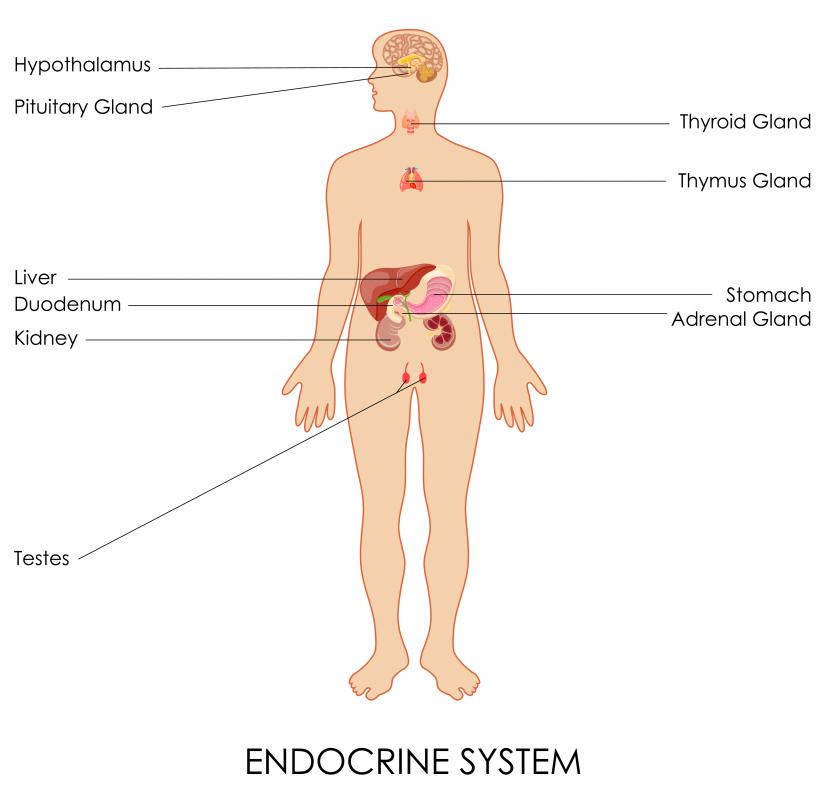At WiseGEEK, we're committed to delivering accurate, trustworthy information. Our expert-authored content is rigorously fact-checked and sourced from credible authorities. Discover how we uphold the highest standards in providing you with reliable knowledge.
What is the Endocrine Pancreas?
Essentially, the pancreas is an organ that facilitates the digestive process and aids in the regulation of glucose levels in the blood stream by releasing enzymes or hormones through exocrine and endocrine tissues. The endocrine pancreas is the endocrine portion of the pancreas and is comprised of three types of islet cells that combine and secrete hormones related to the management of glucose. These cells serve an important role in endocrine function and help the endocrine pancreas function properly.
Only 2% of the pancreas as whole is comprised of endocrine tissues. Despite having a small presence within the body, this portion of the pancreas plays an important role in bodily function and the staving off of diseases like diabetes. The activity in the endocrine pancreas is critical to maintaining blood sugar levels. Each of the cell clusters that comprise the endocrine system contains a specific distribution of Alpha cells (A cells), Beta cells (B cells), and Delta cells (D cells). B cells are situated in the middle of the group while A cells and D cells form each cell cluster’s outer layer.

A cells release a hormone called glucagon. Glucagon increases the level of glucose in the blood stream by mobilizing glucose deposits found in the blood stream. This is important because vital organs depend on glucose for energy. The amount of glucagon secreted by A cells varies based on blood sugar levels. High levels of glucose in the blood stream inhibit glucagon production while low levels of glucose due to hypoglycemia or taxing physical activity cause the amount of glucagon created to increase.

B cells allow the endocrine pancreas to regulate glucose levels by making insulin. Insulin serves a contrary role in relation to glucagon. Glucagon is created to raise glucose levels while insulin is produced to lower glucose levels. The purpose of insulin is to decrease blood sugar by distributing glucose to the muscle instead of allowing it to linger in the blood stream. A deficiency of insulin causes the onset of diabetes. Similar to glucagon, if high levels of insulin already exist within the body, production will decrease and vice versa.
D cells release the hormone known as somatostatin. Somatostatin’s role in the endocrine pancreas is regulatory. This hormone’s role is primarily to inhibit the creation and secretion of other hormones. In relation to glucagon and insulin, somatostatin production increases when too much of either hormone exists in the body.
AS FEATURED ON:
AS FEATURED ON:












Discuss this Article
Post your comments